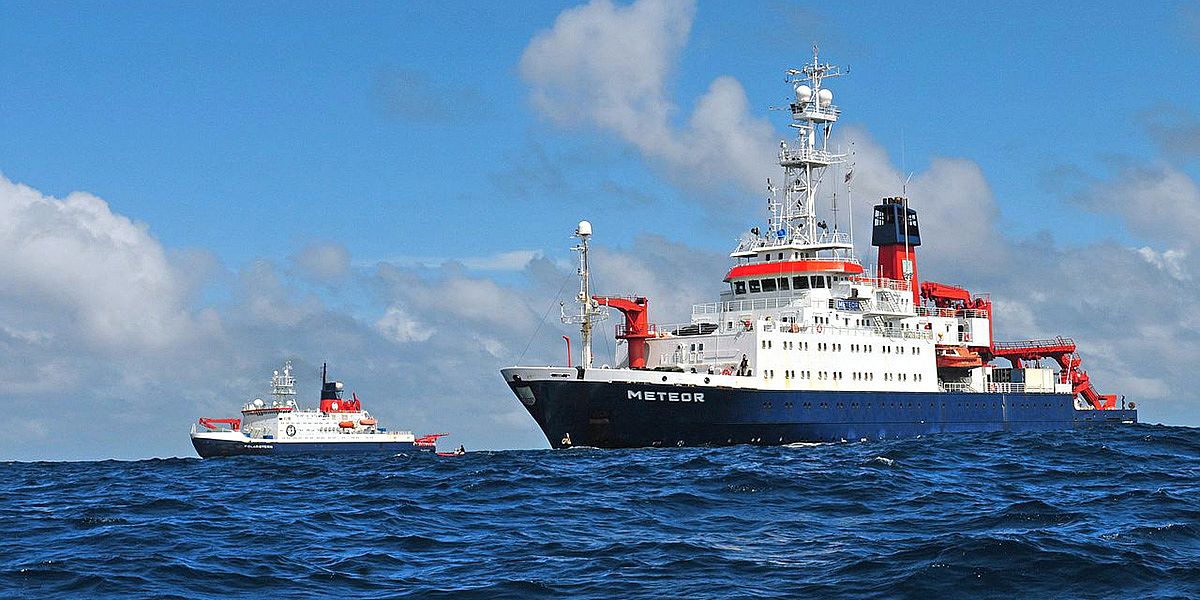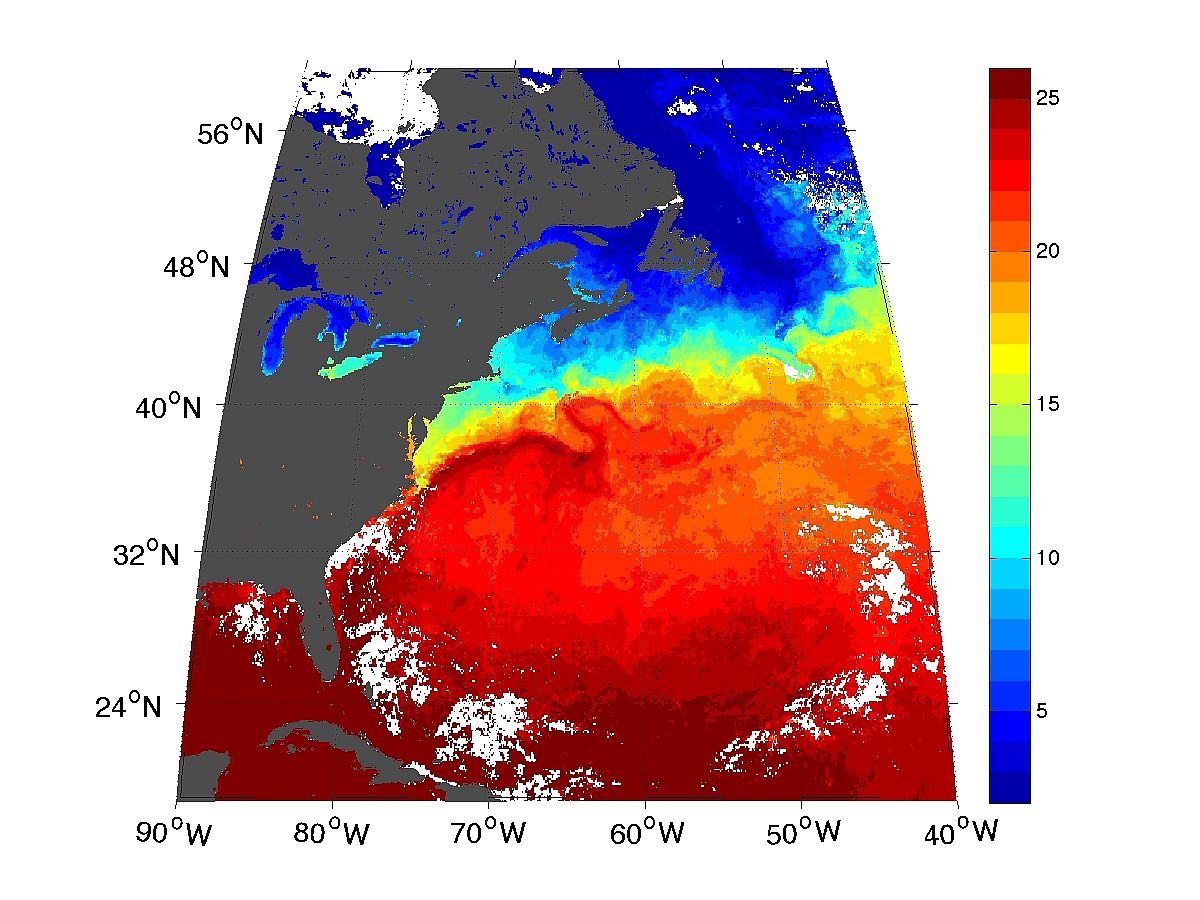The ocean circulation near the sea surface is driven by the interaction of large-scale wind systems such as the westerly winds of the mid-latitudes and the tropical trade winds. In the Atlantic there is an additional circulation, connecting the currents near the sea surface with those in the deep ocean. Near-surface, warm water coming from the South Atlantic flows across the equator, and is transported via the Gulf Stream and North Atlantic Current toward the subpolar North Atlantic. Once it has left the tropics, the water cools off rapidly and thus heats the overlying air. In the Nordic Seas and the Labrador Sea, this water sinks, and is transported from there back south again at water depths exceeding 1000 m (North Atlantic). This so-called meridional overturning circulation is of primary importance for the climate in the North Atlantic area, because throughout the Atlantic it carries heat from south to north. The maximum heat transport amounts to 1200000 gigawatt. For comparison, the typical electrical output of a nuclear power plant is 1 gigawatt. The overturning circulation is closed by the fact that the cold deep water rises gradually again, both at the exit of the South Atlantic within the Antarctic Circumpolar Current, and in the Indian and Pacific Oceans.
Besides its importance for the transport of heat, the overturning circulation plays a central role in the oceanic storage of atmospheric carbon dioxide, which preferentially dissolves in the cold waters of the high latitudes, and is carried into the deep ocean by the sinking water bodies. In the presence of anthropogenic warming, it is currently assumed, based on simulations of the effects of increasing amounts of greenhouse gases in the atmosphere in different climate models, that the overturning circulation will have weakend by the end of this century by about 30%. This is likely due to the fact that the sinking of water at high latitudes will be hindered, because of both warming and reduction in salinity of the shallow waters. The salinity reduction is due to increased amounts of fresh water entering the ocean by precipitation and melting ice. A weakening of the circulation of this kind would result in a reduction of both the transport of heat and the absorption of greenhouse gases.
Until a few years ago, ship-based measurements of ocean currents were the only way to determine the strength of the overturning circulation. Since these measurements are extremely resource intensive, only a small number of snapshots of the circulation has been obtained by this approach. Today we know that the overturning circulation is subject to strong natural fluctuations from month to month. Therefore, from the sporadic historical measurements it is difficult make assessments of potential long-term changes of the circulation. New technical and scientific developments, however, since the beginning of this century, allow us to capture the strength of the overturning circulation by means of moored instruments (⇒ Link to moorings) continuously, and to explore the temporal changes from month to month, year to year and over longer periods. In addition to the long-term operation by GEOMAR of a measurement system for detecting the southward deep water flow (North Atlantic) in the subpolar North Atlantic, scientists from Kiel are involved in the analysis of data obtained from moored systems for the continuous monitoring the overturning circulation in the subtropical and tropical North Atlantic, which are operated by British and American colleagues.
Contact:
Johannes Karstensen




